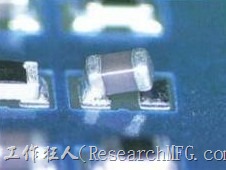 Recently, some people have asked about issues with solder empty in small chip SMD components like resistors and capacitors. Even after thoroughly checking the reflow oven profile settings and confirming everything is correct, solder empty still frequently occur with these components, often in fixed positions. Observations of the solder also don’t show any signs of non-wetting or de-wetting, leaving many puzzled.
Recently, some people have asked about issues with solder empty in small chip SMD components like resistors and capacitors. Even after thoroughly checking the reflow oven profile settings and confirming everything is correct, solder empty still frequently occur with these components, often in fixed positions. Observations of the solder also don’t show any signs of non-wetting or de-wetting, leaving many puzzled.
In reality, the cause of solder empty in these components isn’t that hard to understand! It’s essentially the same reason tombstoning occurs. To put it simply, it all comes down to this: “The solder paste on the two terminal ends of the component melts at different times, resulting in uneven forces and causing one side to lift.”




